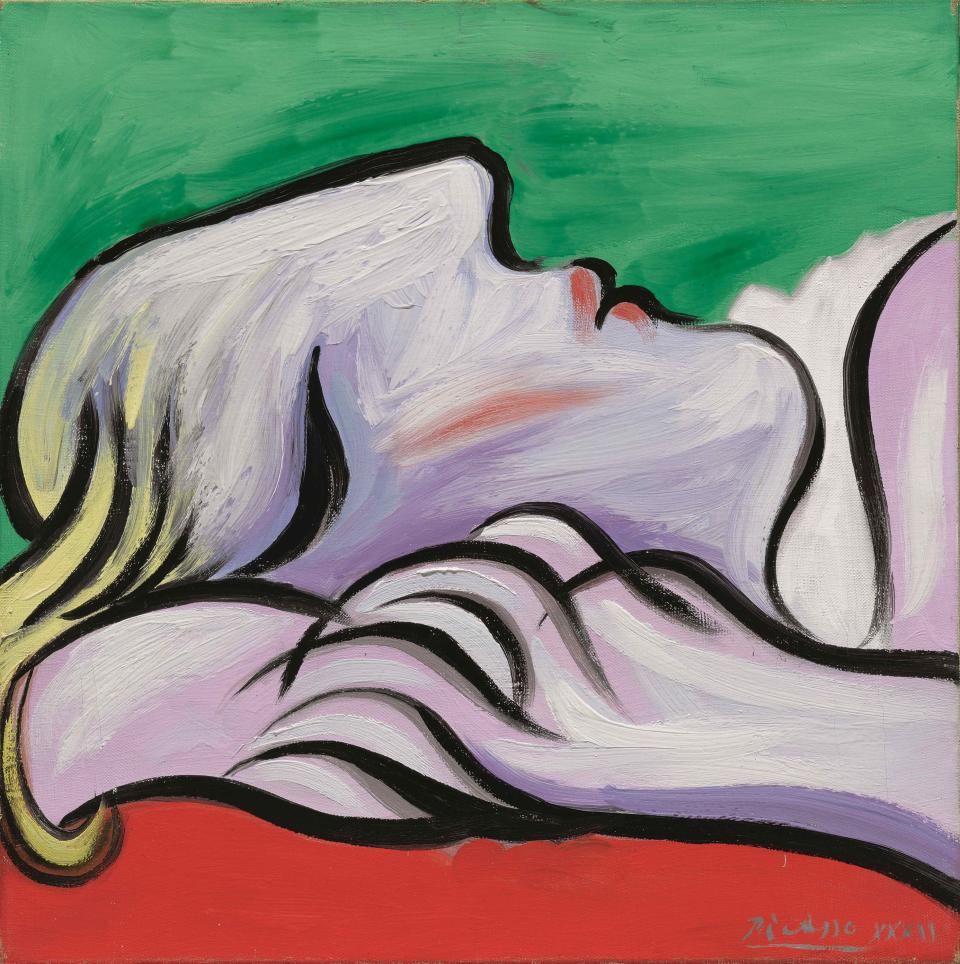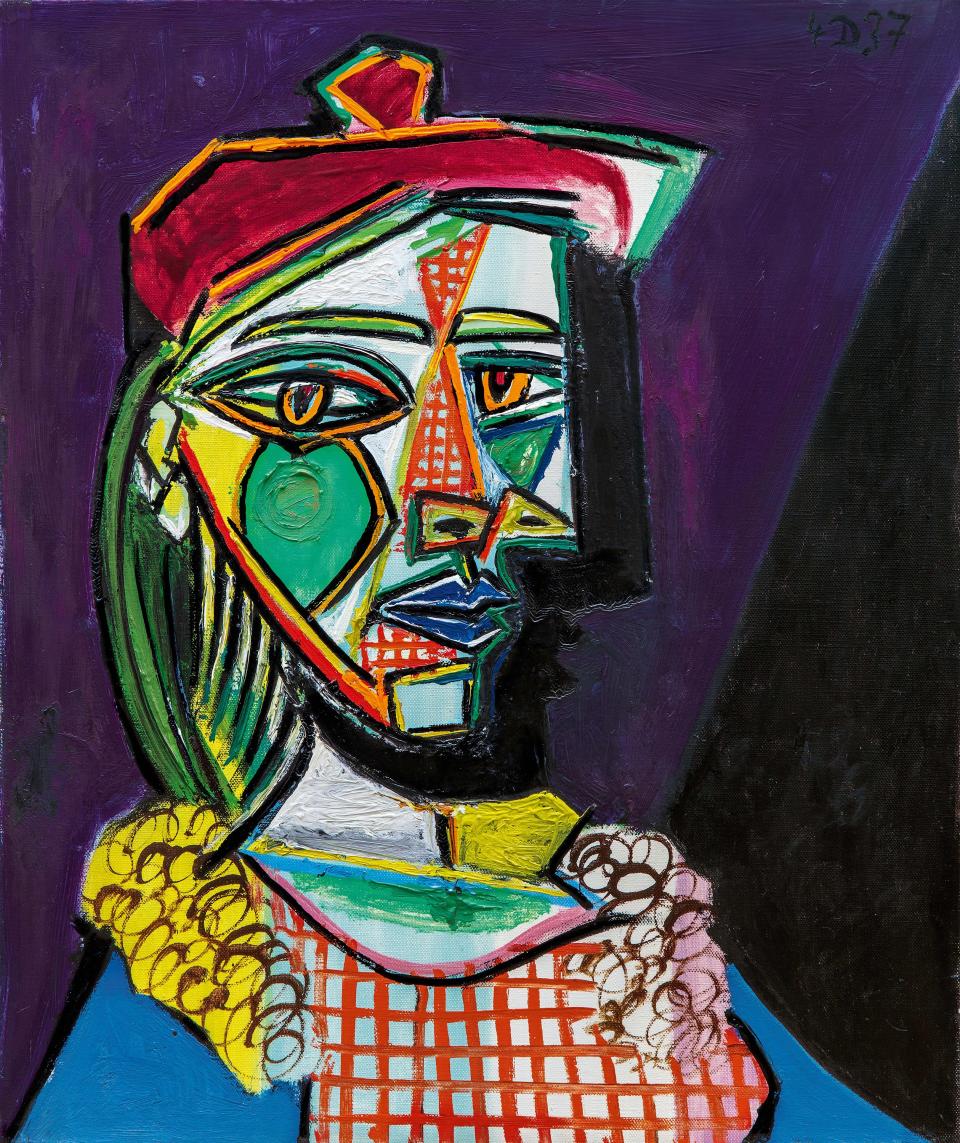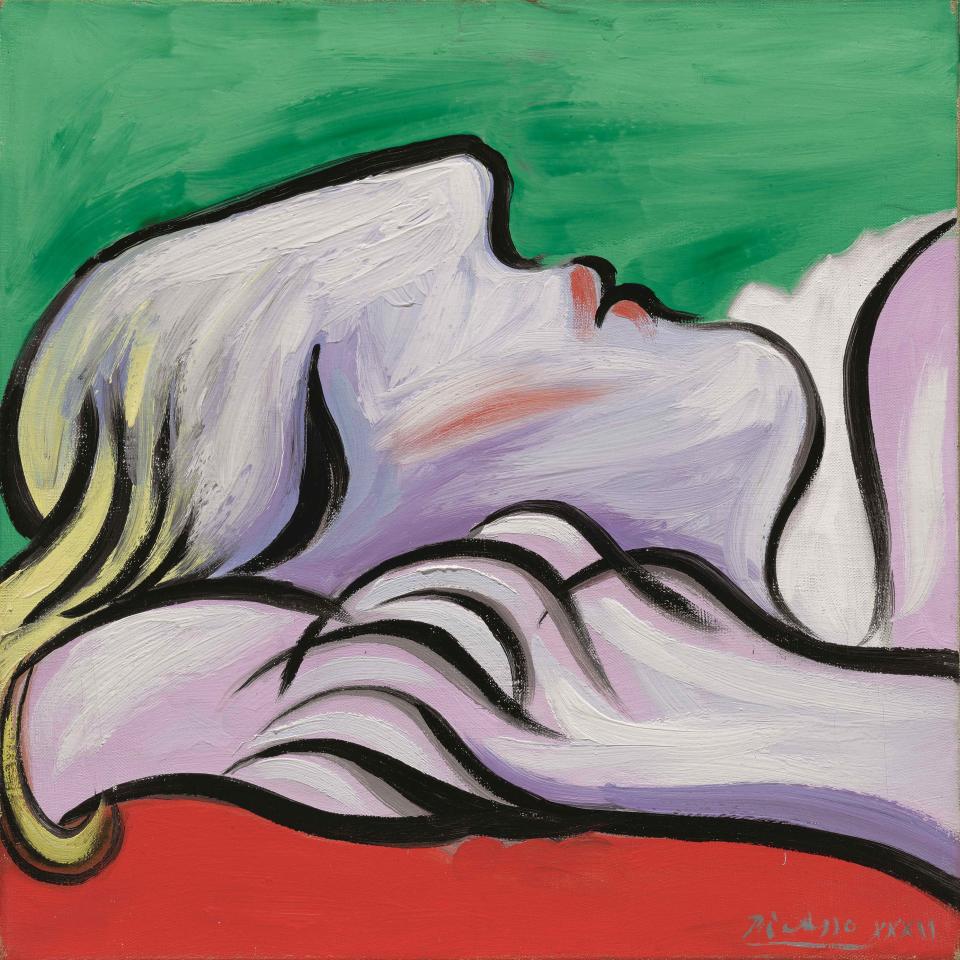Will Picasso’s Le Repose, a Portrait of His “Golden Muse,” Marie-Thérèse Walter, Be the “Sleeper” Hit of the Upcoming Auction Season?

Pablo Picasso continues to be one of the most bankable artists on the planet: His 1937 masterpiece, Femme au béret at à la robe quadrillée, sold for £49.8 million at Sotheby’s in London this past week, setting the highest price ever realized for a painting at auction in that currency. And on the eve of the opening of The Ey Exhibition: Picasso 1932 – Love, Fame, Tragedy, at the Tate Modern, Vogue can now exclusively reveal that the centerpiece of the company’s May 14 Impressionist & Modern Art Evening Sale in New York will be Le Repose. Like Femme au béret, this stunning masterwork from 1932—estimated to sell for $25/35 million—is a portrait of the Spaniard’s muse, Marie-Thérèse Walter, Picasso’s so-called “golden muse,” and according to Sotheby’s Simon Shaw, “arguably the love of his life.”
The painter met this sporty, statuesque blonde teenager on the street in 1927. Born in 1909, Walter was the illegitimate daughter of a Swedish businessman and a Frenchwoman and was living at home at the time of their first encounter. The 46-year-old Picasso was then unhappily married to the Russian ballerina Olga Khokhlova. The pliable, good-natured Walter soon became his muse and secret mistress.
Love, for this charismatic and volatile artist, was always a catalyst for change, and Picasso’s paintings and sculptures of Walter are characterized by sinuous, sometimes bulbous curves, rather than stark geometries. The springtime of their great and erotically charged love was captured in a novel way by Picasso, who was by then, in the autumn of his own life. Le Repose was painted in 1932, the year of the artist’s first retrospective exhibition, which followed that of his great rival, Henri Matisse. Conscious that “he’s kind of painting his place in history,” Shaw explains that the rivalry pushed Picasso to do his best work, and during this period he combined elements of classicism and surrealism.
Though the lush colors of Le Repose share the sun-kissed quality Matisse is noted for, there is no hothouse atmosphere of exoticism in Picasso’s work, which is unbound by physical interiors. Like the Surrealists, Picasso was fascinated by dreams and the subconscious, which, explains Shaw, Freud defined as “the royal road to the unconscious.” Reason plays no part in reveries, where our deepest desires can be expressed. To Picasso, the sleeping Walter is free of constraint, an object of passionate desire and a living dream of the dewy intoxication of youth. In repose, Walter emanates serenity and calm, and it is with her that Picasso is said to have experienced true domestic harmony.

Le Repose is an intimate painting, both in terms of subject matter and scale; Picasso caresses Walter with his brush and his gaze. In this painting, he has eyes for no one but Walter, in contrast with Femme au béret, which is a sort of double portrait of Walter and her rival, the politically engaged photographer Dora Maar. Though the painter would claim that all his portraits were amalgams, never representations of a single person, Le Repose seems to be an exception to that rule. “It’s as pure as you’ll get,” Shaw asserts, “Picasso is just utterly infatuated with her.”


